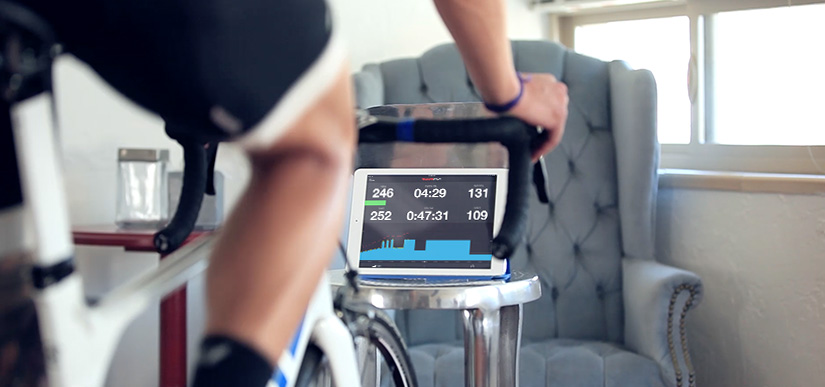Training Plans Update: Get Faster for Your Climbing and Rolling Road Races

Climbing Road Race and Rolling Road Race plans have been improved to fall in line with the newly revised Base and Build plans and be more specific to your race goals.
What’s New
In the second round of Specialty Plans updates (the Century plans were the first of the Road Specialty plans to be updated), Coach Chad revamped all Climbing Road Race and Rolling Road Race plans.
Consistent with all TrainerRoad training plans, the newly revamped road-specific plans are each offered in three volumes: low, mid and high. All updated low-volume plans have a total of three interval workouts a week, mid-volume plans include five workouts a week and finally, all high-volume plans consist of six workouts a week.
The Types of Fitness You Will Gain
The fitness that’ll emerge from the Climbing Road Race plan is the ability to sustain a higher percentage of your functional threshold power for extended segments — think climbs anywhere from 12-40 minutes long. The fitness you can expect from the Rolling Road Race plan, on the other hand, is the ability to tackle undulating courses with short difficult, VO2max-like efforts.
What to Expect
In a nutshell, across both newly updated road Specialty plans the TSS has been evened out. This is supported by the removal of many high TSS workouts. Weeks 1-6, for instance, are essentially the same TSS. For road racers planning to race on a frequent basis, this gives you the option to either scale up or scale back your week’s workouts based on the demands of your racing schedule.
After your first six weeks of steady TSS, you’ll hit your first of two taper weeks. Entering into your seventh week of training, there’s about a 30% decrease in TSS, followed by another 50% decrease leading in your final eighth week of training. While volume is reduced, intensity remains high to keep you sharp and primed for any B- or A-priority events.
In line with the new Base and Build plans, another theme of the newly updated Road Speciality plans is that your recovery weeks are focused on true recovery. Everything takes place at about .60-.70 intensity range. On top of that, there’s also a small smattering of sprints added into each recovery week to keep neuromuscular power sharp.
Why is There a Drop in Stress from the Newly Updated Build Plans?
In Base Phase plans the ramp rate is pretty steady, then that ramp rate grows a little bit in the Build Phase. Entering into the Specialty phase, it’s the time to back stress off slightly so that freshness can come to the surface and riders can race well both during the week and weekends. The newly updated Climbing and Road Race plans reflect this logic.
There’s about a 20% decrease in stress load relative to the newly revised Build phase plans across these new road Speciality plans. Again, this is to bring a rider’s freshness to the surface. We’re not as much focused on building fitness as we are honing it and making it very specific to the task at hand, which in this case is climbing and rolling road races.
How Do I Choose Between the Climbing and Rolling Road Race Specialty plans?
Climbing Road Race plans assume you’re going to be tackling more sustained efforts, whereas the Rolling Road Race prepares you for punchier, shorter-lived efforts.
Twelve-minute climbs is about where we draw the line, as they are much more of a steady state affair. Anything less than twelve minutes can veer heavily toward aerobic capacity and higher intensity efforts. That said, here’s a good rule of thumb: If the road course you plan to race has climbs that are in excess of 10-12 minutes, something like the the Cascade Cycling Classic for example, lean towards the Climbing Road Race plan.
But if the course’s hills are more rolling in nature — so frequent and each about ten minutes and under — then the Rolling Road Race plans is your best bet. A good example of this type of race would be the European Amstel Gold Race. Even though there’s a lot of climbing over the course of that race, those climbs come in short bursts.
How to Get Started on a New Climbing or Rolling Road Race Specialty Plan
If you’ve recently started (before May 8, 2017) a legacy Climbing or Rolling Road Race Specialty plan and would like to update your plan to one of the new plans, you must stop your current plan and reselect the plan you were on to access the new updates.
If you’d like to update your new plan with completed workouts from your legacy Speciality plan, you must unassign the workouts from your past plan in order to assign them to the new plan. It’s recommended to delete your original plan to disassociate all your completed rides. This will allow you to more quickly assign those completed rides to your new plan.
What’s Next
Stay tuned for more newly revised Road Speciality plans! Coach Chad is currently working on refinements to the 40k TT and Criterium Speciality phase training plans to fall in line with the recently updated Base and Build plans.
Have a question about the latest training plans update? Leave it below or send our support team a message to support@trainerroad.com.
